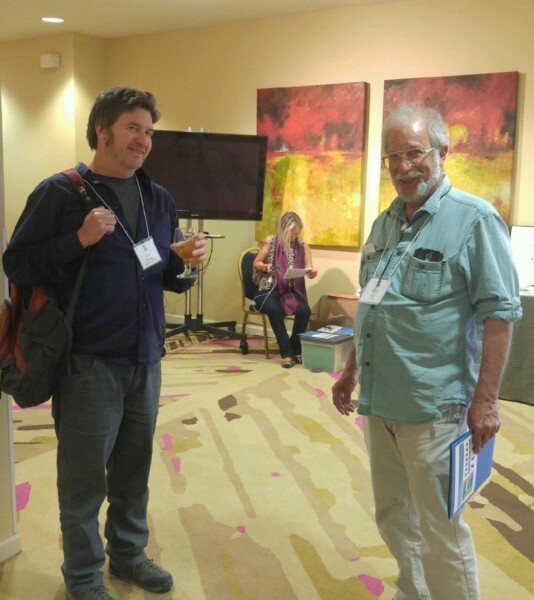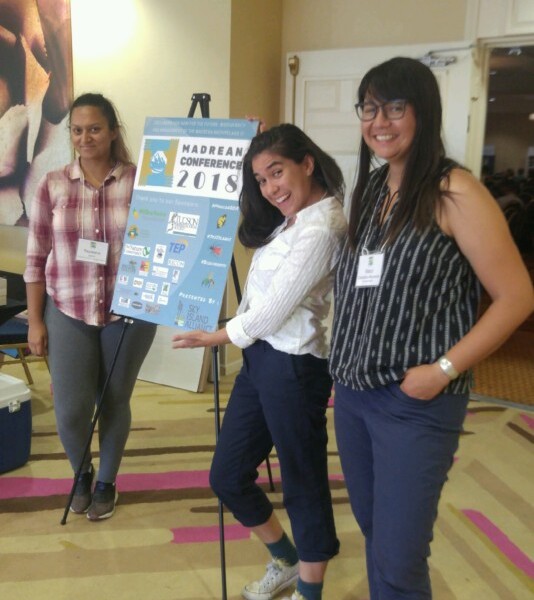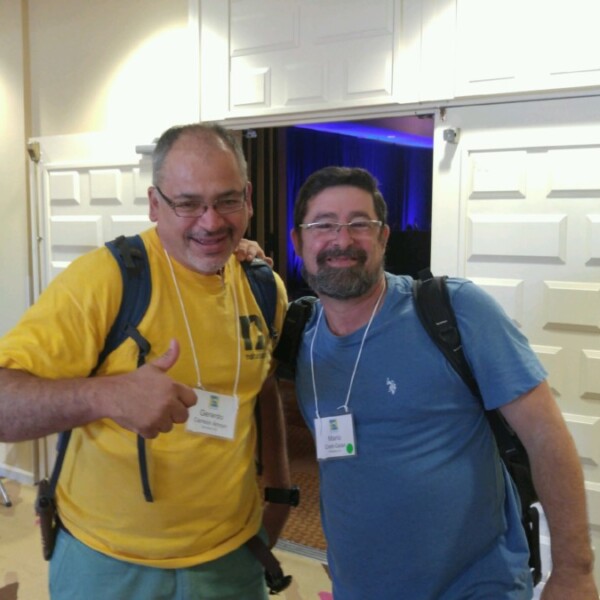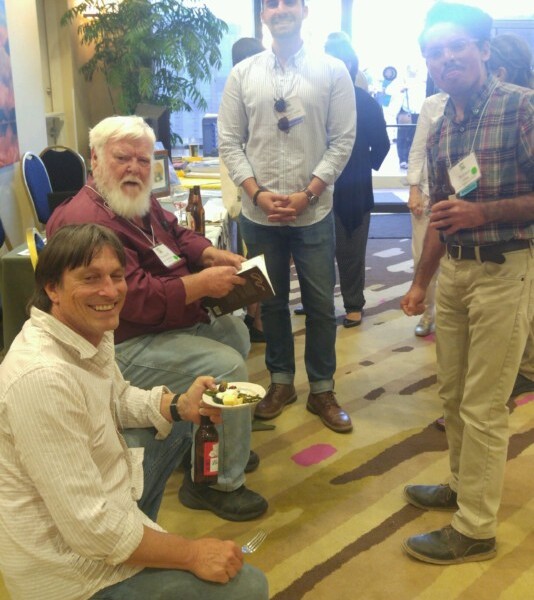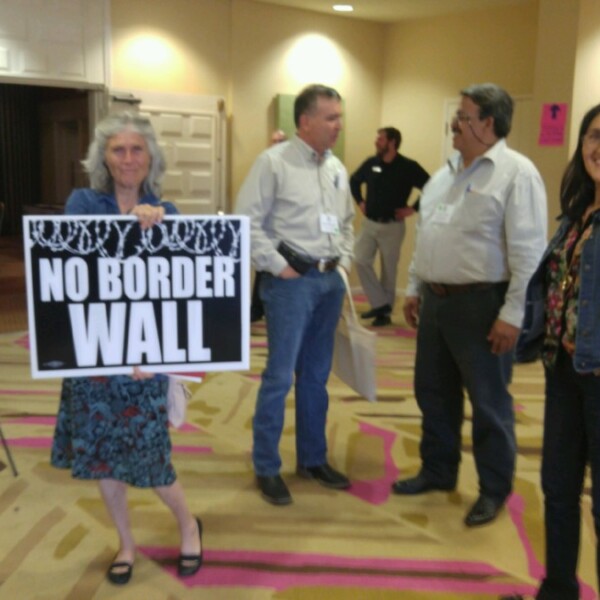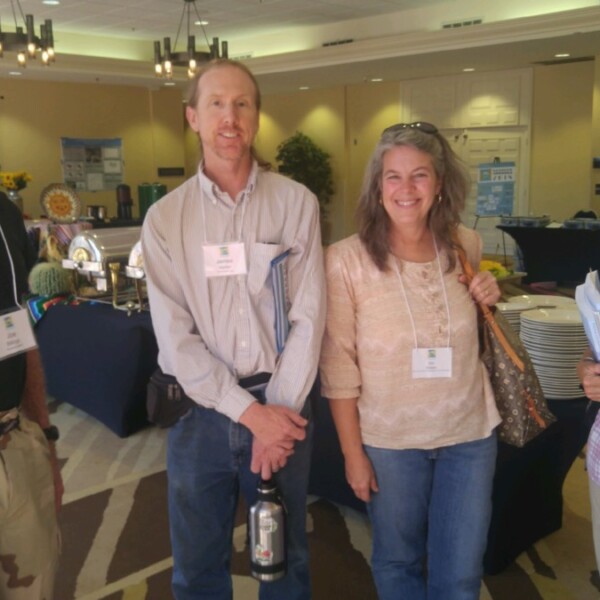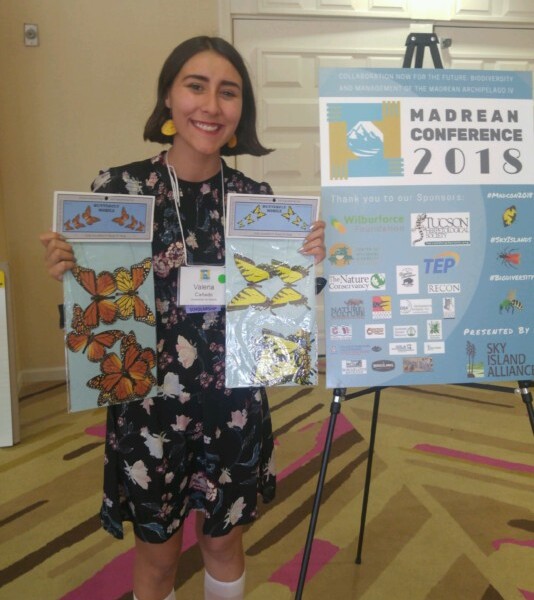Thursday, May 17, 2018
Day 4 – Big thinking and grand visions
Inspired by field trips on Wednesday and pumped full of ideas from three days of engaging sessions, Thursday at MadCon was all about BIG thinking.

Photo credit: Leslie Ann Epperson
The day kicked off with author Mary Ellen Hannibal sharing her take on the big power of citizen science. She expounded on the importance of all of us recognizing our “citizenship” of earth and contributing to understanding the stories of the world around us through careful observation. Citizen science drives so much of the work we do here, so her thoughts were an invigorating way for us to start the day. We carried the morning’s inspiration into a full-day session exploring current applications of citizen science, moderated by our very own Madeline Ryder, who said:
One talk in particular will stick with me, not necessarily because of the content, but because of the style of presentation. Brian Powell, with Pima County, works with a lot of data, spreadsheets and P values. Recently though, several of his projects have merged art with science in an effort to create more public engagement and awareness. The talk itself was artistic, with sweeping scenes of the Sky Island region and poetic notes from Brian about how much it all means to him, and to all of us.
Another full-day session on large-landscape conservation included success stories at Leslie Canyon National Wildlife Refuge and important climate and ecological scenarios to consider for the future in the Madrean Archipelago. The shared vision and success discovered among the participants will guide collaboration through the coming years to protect Sky Island landscapes.
Louise Misztal’s surprising highlight of the day was hearing about the diversity of soil mites in a pine-oak woodland in Sonora. She said:
I was so intrigued by the study of soil mites, I couldn’t help but ask presenter Sofia Gozales Salazarhow how she became interested in mites, and it was quite a story of a long fascination and love evidenced by her tattoo of a mite! She’s discovering amazing critters we never previously knew existed in Sonora.
Nearing the end of a long, thought-provoking week at MadCon. Thursday night brought a much needed social mixer to get Emerging Leaders prepared for the Friday morning Emerging Leader panel. Everyone had a chance to relax a little bit and get to know our fellow conference-goers better. Madeline said, “I couldn’t think of a better way to end our last full day with each other before getting to our final Friday discussion on the future of the Sky Islands.” Louise wants to thank Borderlands Brewing Company for providing a venue to “form big ideas over good beer!”
Throughout the week, Carianne Campbell, Sky Island Alliance Restoration Director—and conference planner extraordinaire!—has been gathering photos of people who have created highlights for her conference experience. Below are just a few of those!
Wednesday, May 16, 2018
Day 3 – Herp, Herp, Hooray!
MadCon Wednesday was a dedicated to all things scaly, slimy, and slithery! While lots of MadCon attendees were out and about, exploring science on the ground in the Madrean Sky Islands (look for field trip photos on Facebook soon!), dozens more were at the conference hall exploring all things herpetological at a full day program provided by the Tucson Herpetological Society.
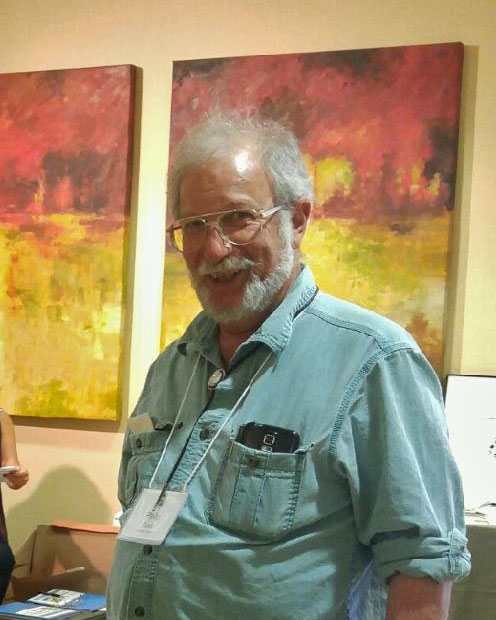 The herpetology special session kicked off with a presentation honoring Dr. Phil Rosen for his outstanding contributions to herpetological studies and fieldwork in the region!
The herpetology special session kicked off with a presentation honoring Dr. Phil Rosen for his outstanding contributions to herpetological studies and fieldwork in the region!
Bryon Lichtenhan, Sky Island Alliance’s Field Coordinator soaked up “tons of cool info about our regional herpetofauna!” At the morning’s Whither Underground: Toward a holistic understanding of snakes session, Bryon was fascinated to discover that Arizona black rattlesnakes turn out to be much more social than previously imagined, forming life long bonds within complex and sometimes quite extensive communities. Their interactions include communal birthing and the protection of newly born snakes by females that are not the mothers, but are themselves pregnant. Free childcare! These snakes have it figured out.
Before heading off to co-moderate a panel on Tracking and Prioritizing Invasive Species Management, our Community Engagement & Field Coordinator Madeline Ryder was also struck by the presentation at the Whither Underground session. The talk brought to mind last summer, which she spent working in Sabino and Bear Canyons, where she saw numerous black-necked garter snakes, rattlesnakes, whiptails, and king snakes—almost all for the first time. She said:
The most memorable point was this: As scientists, we’re hesitant to attribute positive “human” characteristics of love and affection to non-human animals, but quicker to attribute negative characteristics like fear and aggression. For endangered snakes (and animals of all kind, really), perhaps there’s less to lose from a bit of anthropomorphism than there is to gain from seeing some unexpected affection.

That’s Marci on the right, pictured with some of the other Doris Duke Scholars at MadCon!
Marci Caballero-Reynolds, attended the Tool Cafe focused on Climate Landscape Response (CLaRe) metrics to learn how this tool aids in mapping the location and documenting the phenometrics of buffelgrass through remote sensing. Marci said, “Having just completed a remote sensing class focused on land use and land cover change last semester at UA, and as an undergraduate who would like to continue on this geospatial analysis journey, CLaRe metrics could be a tool I will use when looking at phenological changes in other greening plants.” So inspiring to see the things we learn in the classroom used in real-life applications!
From the recent (re)discovery of of a previously unknown species of agave that seems very likely to be the original species farmed by many Hohokam communities to revelations of a 20-year Pima Country Regional Flood Control District ecosystem restoration project to address local environmental needs for wildlife and the public, the poster session and evening social that wrapped up MadCon Day 3 was a hit.
Madeline had a surprising and unique experience during the poster session:
After a day full of conversations on reptiles and invasive species management, I was tired. But not too tired to hop on an awesome bicycle powered seed pelletizer! This prototype was part of the evening poster session at the Madrean Conference, where our emerging leaders and established professionals shared their findings on some of the most important knowledge needs for the Sky Island region.
Check out the short video (shot by Marci) on Facebook!
Remember, stay tuned to Facebook for a follow-up photo album from the amazing field trips—and as always you can track all the #MadCon2018 happenings on Twitter.
Tuesday, May 15, 2018
Day 2 – A truly binational event
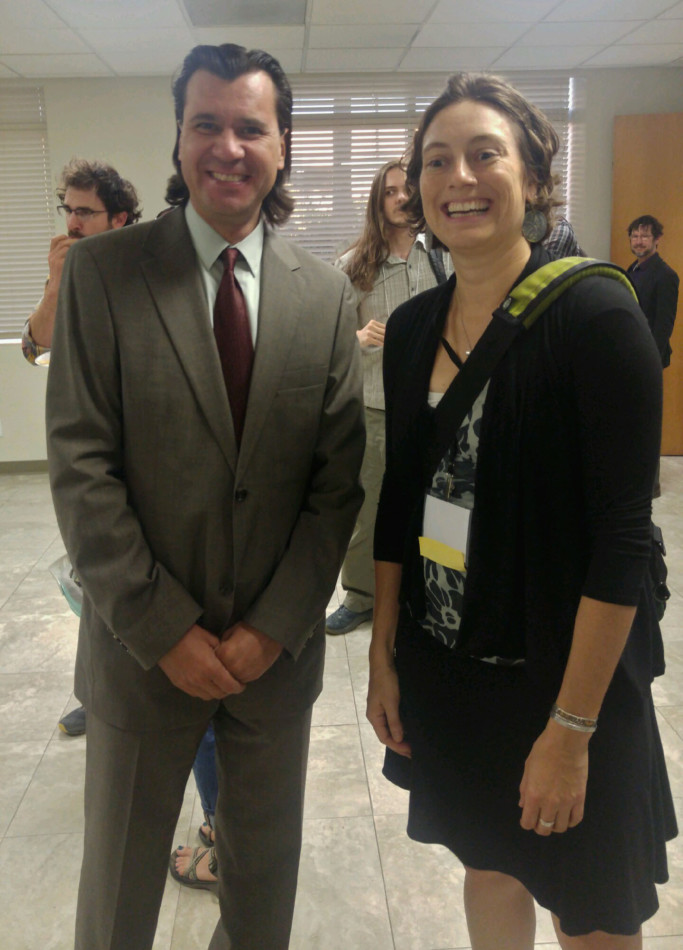 MadCon Tuesday was jam-packed with experiences, connections, and fresh insights. From the opening remarks by the Mexican Deputy Consul to the artist’s reception in the evening, crossborder collaboration and innovative solutions were the themes! Obviously these themes pervade every session at the conference, but they were on display in full glory on this day.
MadCon Tuesday was jam-packed with experiences, connections, and fresh insights. From the opening remarks by the Mexican Deputy Consul to the artist’s reception in the evening, crossborder collaboration and innovative solutions were the themes! Obviously these themes pervade every session at the conference, but they were on display in full glory on this day.
Deputy Consul Enrique Gomez Montiel set the tone for the day in his remarks, noting that this meeting is so important because we are working bilaterally to conserve this gem of nature shared between the U.S. and Mexico.
Panelists from both sides of the border, including our own Mirna Manteca, discussed the challenges they have faced and the successes they have experienced in crossborder work. There were also plentiful inspiring words on how we can succeed in this work in the coming years.

Photo credit: Leslie Ann Epperson
The full-day session Migrant Jaguars go Both Ways did not disappoint! Louise Misztal was thrilled to learn more about the beautiful lands of the Northern Jaguar Preserve, the current status of the northern population of jaguars based on remote camera detection, and updates on efforts to conserve them. And, Louise says, “We were regaled with a new video from NJP of jaguars breeding!” The sculpture of the Spirit of Macho B watched over the day’s proceedings, and amazing wildlife camera photos were plentiful.
The panelists highlighted the crucial role of working directly with landowners and ranchers, the potential benefits of reducing hunting of natural prey species to ensure adequate numbers for jaguar to eat, and the importance of continued preservation of excellent habitat for jaguars to recolonize in the U.S., if they can safely make their way here.
As always, there is so much more than we can highlight in one blog post, including sessions on grassland habitats, invertebrates, climate, mesquite and riparian health, and more.
The day wrapped up with two staff favorites, courtesy of photographer and filmmaker Krista Schlyer. Krista’s talk, Continental Divide, Wildlife, People, and the Border Wall, “brought the emotion of biodiversity and cultural loss that old and new border infrastructure has caused home to us in a heart-wrenching photo tour and commentary on border impacts,” said our Conservation Science Director Scott Wilbor. Krista also shared some excellent advice in these times of constant grief, by suggesting to emerging leaders that you must “find what you love, love it, and then work like mad using your voice to protect it.”
By evening, T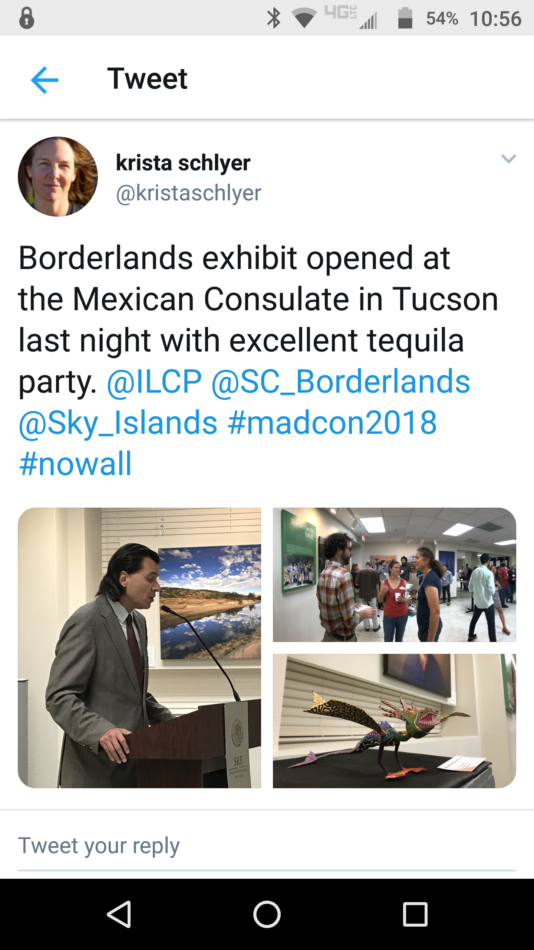 witter was abuzz with photos and praise for the Continental Divide Artist’s Reception at the Mexican Consulate in Tucson (and the tequila). Emma Fajardo, Sky Island Alliance’s Bilingual Conservation Coordinator, said the event was a great way to wrap up an inspiring day, and a highlight for her was having the Counsel staff join us for the reception!
witter was abuzz with photos and praise for the Continental Divide Artist’s Reception at the Mexican Consulate in Tucson (and the tequila). Emma Fajardo, Sky Island Alliance’s Bilingual Conservation Coordinator, said the event was a great way to wrap up an inspiring day, and a highlight for her was having the Counsel staff join us for the reception!
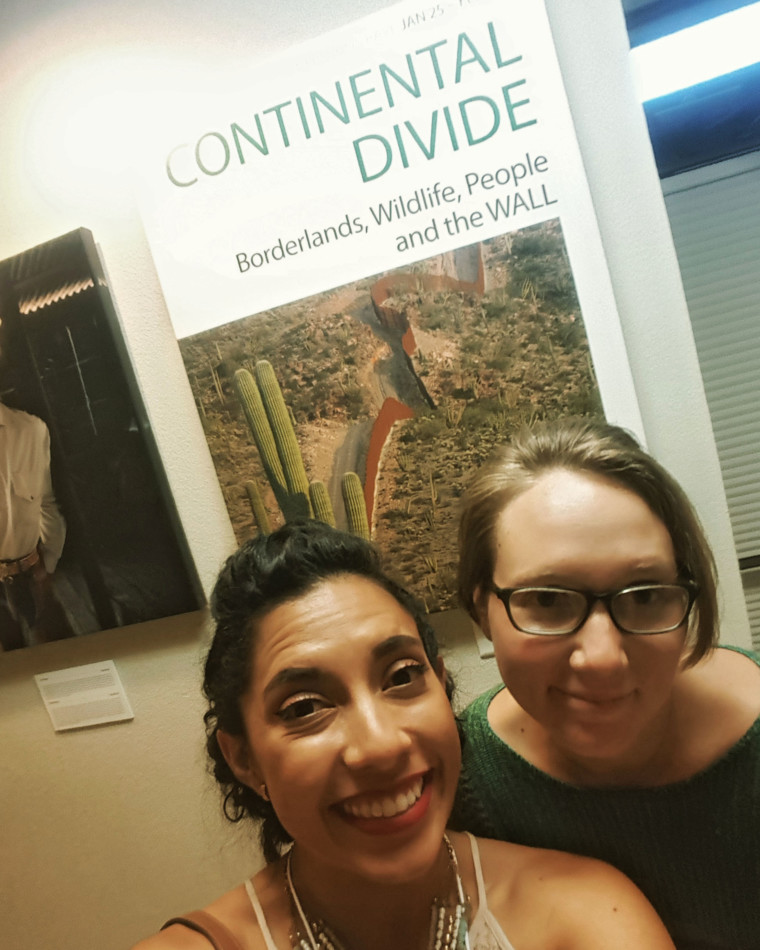
Monday, May 14, 2018
Day 1 – Was that a puppet that just walked by?
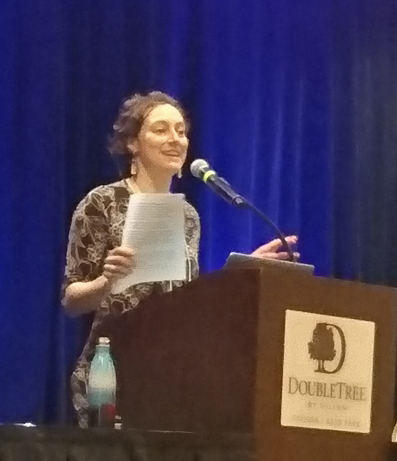 The Madrean Conference kicked off on Monday, and what a day it was! Louise Misztal, Executive Director here at Sky Island Alliance, set a tone of collaboration, forward thinking, and inclusiveness with her opening remarks. Then the hundreds of participants launched into sessions on wildlife monitoring, pathway connectivity, native seed collection, climate change and pollinators, and more.
The Madrean Conference kicked off on Monday, and what a day it was! Louise Misztal, Executive Director here at Sky Island Alliance, set a tone of collaboration, forward thinking, and inclusiveness with her opening remarks. Then the hundreds of participants launched into sessions on wildlife monitoring, pathway connectivity, native seed collection, climate change and pollinators, and more.
Sami Hammer, leader of our efforts to survey wilderness springs and Adopt-a-Spring program, spent her day immersed in sessions on water for natural areas, as is fitting. Some highlights from her day included Valer Clark of Cuenca los Ojos sharing strategies for how rock structures in dry washes can restore perennial flow to streams that haven’t flowed in 100 years; Lara Cornejo from the University of Sonora on how drones help us explore floodplains (but you have to watch out for birds of prey while flying them!); and Jeff Biggs from Tucson Water sharing exciting plans to use recycled water to bring back flow in the Santa Cruz River through the heart of Tucson. He says the water should be high enough quality to swim in, and we could even create a riverwalk to enjoy it more and attract tourism!

Photo credit: Leslie Ann Epperson
Another attendee favorite from the day was a session for emerging leaders in conservation, hosted by Southwest Decision Resources. These young scientists, community leaders, and activists are our best hope for the future. It is so inspiring to hear them share their stories and to arm them with the skills they will need to secure a future for the Sky Islands wildlife and wild lands we all love. Members from student groups Sky Island Alliance has helped establish, who are working to protect pollinators, monitor wildlife in the Borderlands, and study Sonoran springs, were among the participants in this session.
The day wrapped up with a puppet show that is used by Naturalia AC to share strategies for jaguar conservation in rural schools in Sonora! Here’s how Mirna Manteca, our Mexico Conservation Manager, described it:
Cerrando con broche de oro. Or closing with a golden brooch, as they say in Sonora. The first day at Mad Con was a success, and we wrapped up the afternoon with El Rey Jaguaripa, an environmental education puppet show from L’ormiga Títeres, and 20 elementary school students from the Paulo Freire Freedom School.

There was so much more we’d love to highlight here—too much to capture in one blog post—but it’s off to another day of exploring ideas, expanding knowledge, and exploding preconceived ideas of what is possible! We are all so grateful for each and every attendee sharing their experience and enthusiasm.
Don’t forget to follow the #MadCon2018 tweet storm on Twitter!
May 10, 2018
The anticipation builds…
Madrean Conference 2018 gets underway in just a few days, and the anticipation around the office is building! Okay, maybe there’s a little panic too, but mostly it’s anticipation.
Hundreds of scientists, land managers, students, and conservationists will gather from May 14 – 18 for the Biodiversity and Management of the Madrean Archipelago Conference. The 2018 theme for this premier regional event is “Collaboration Now for the Future.”
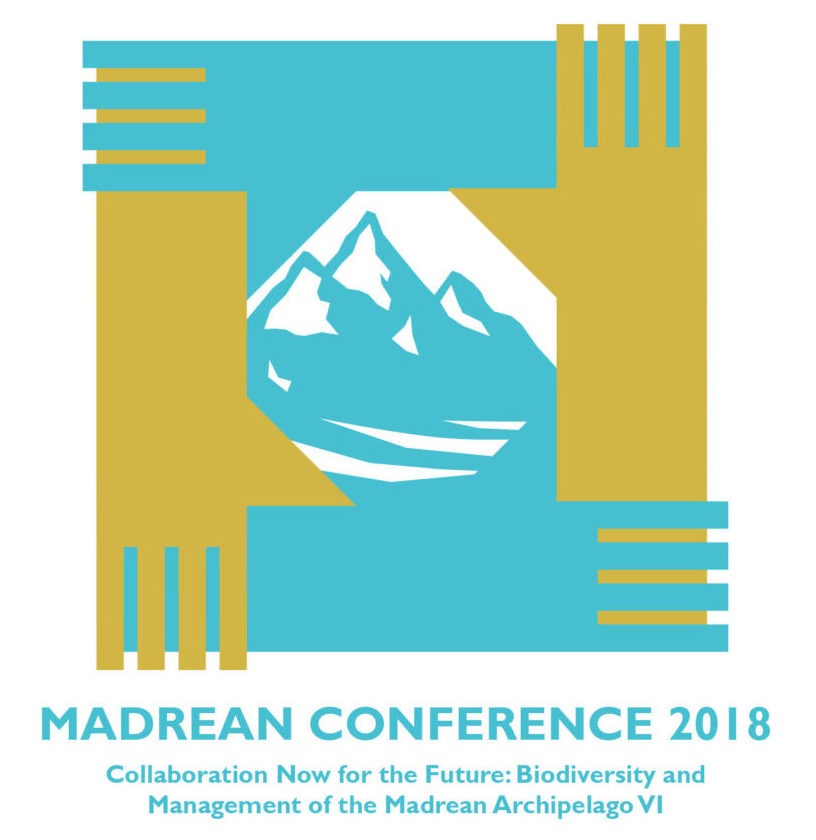 We’ll be sharing a Daily Digest of highlights from the conference in this space, so stay tuned! If you want even more from the conference, make sure you follow us on Twitter and Instagram, where we’ll post real-time reflections and highlights. Look for #MadCon2018!
We’ll be sharing a Daily Digest of highlights from the conference in this space, so stay tuned! If you want even more from the conference, make sure you follow us on Twitter and Instagram, where we’ll post real-time reflections and highlights. Look for #MadCon2018!
There’s still time for you to be there! The registration deadline is TOMORROW, Friday, May 11th! La fecha límite para inscribirse es MANANA – viernes, el 11 de mayo!
REGISTER NOW / REGÍSTRATE AHORA
MEDIA
Media are invited to attend select sessions at the conference; and conference participants, Sky Island Alliance staff, and keynote presenters will be available for media interviews during the week.
Media contact:
Louise Misztal, 520-461-7664, [email protected]
Carianne Campbell, 520-624-7080 x14, [email protected]

